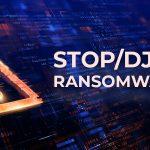Aluc Service is a Trojan That Disguises Itself as a Harmless Program
Trojan malware, like Aluc Service, is a type of malicious software designed to appear legitimate while actually hiding malicious functionality. Trojans can infect your computer through various means and are dangerous because they can perform a wide range of harmful activities on your system, usually without your knowledge. Here’s how they can enter your system, and how to remove them:
How Do You Get Infected with Trojans like Aluc Service?
Email Attachments
Cybercriminals often send malicious attachments in emails, disguising them as legitimate documents or files. When you download and open these attachments, the Trojan gets activated.
Unreliable Websites
Visiting compromised or unreliable websites can lead to drive-by downloads, where Trojans are silently installed on your system without your consent.
Software Downloads
Downloading software or files from untrusted sources, including torrent sites or cracked software pages, can expose you to Trojans. These malicious programs are sometimes bundled with legitimate-looking software.
Social Engineering
Cybercriminals may trick you into downloading and executing a Trojan by using social engineering techniques, like fake alerts claiming your system is infected and urging you to install a supposed antivirus tool.
USB Drives
Malicious Trojans can spread through infected USB drives. Plugging in an infected USB drive can transfer the Trojan to your computer.
Why Are Trojans Dangerous?
Trojans can be extremely dangerous because they are versatile and can perform various malicious activities, such as:
Data Theft
They can steal sensitive information like passwords, credit card details, and personal files.
Remote Access
Some Trojans allow attackers to gain remote access to your computer, enabling them to control your system, steal data, or launch further attacks.
Keylogging
Trojans can log your keystrokes, capturing passwords and other sensitive information you type.
Botnet Recruitment
Your infected computer can become part of a botnet, a network of compromised devices controlled by cybercriminals for various illegal activities.
Distributed Denial of Service (DDoS) Attacks
Trojans can be used to launch DDoS attacks on websites, rendering them inaccessible.
How Do I Remove Trojans?
Removing Trojans can be a challenging task, but here are some steps you can take:
Use anti-malware Software
Run a reputable anti-malware program to scan and remove the Trojan. Make sure your antivirus definitions are up-to-date.
Disconnect from the Internet
Disconnect from the internet to prevent the Trojan from communicating with its command and control server.
Safe Mode
Restart your computer in Safe Mode to limit the Trojan’s ability to run. To restart your computer in Safe Mode, consult instructions intended for your operating system.
Manual Removal (Advanced Users)
If you are technically proficient, you can attempt manual removal by identifying and deleting malicious files and registry entries. However, this can be risky if not done correctly.
Reinstall Your OS
In extreme cases where the infection is severe or difficult to remove, you may need to reinstall your operating system to ensure complete removal.
Restore from Backup
If you have clean data backups, restoring your system from a good backup can help remove the Trojan.
Remember, the best defense against Trojans is prevention. Practice safe online browsing habits, keep your software and operating system updated, use strong and unique passwords, and be cautious when opening email attachments or downloading files from the internet.





